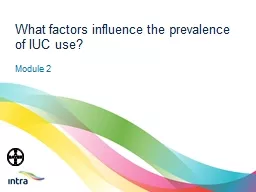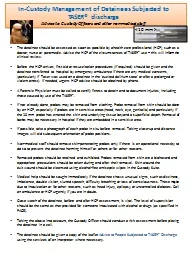PPT-Series 2.1 Health system and HCP barriers
Author : LovableLatina | Published Date : 2022-08-04
What factors influence the prevalence of IUC use INTRA group I ntrauterine co N traception T ranslating R esearch into A ction A panel of independent physicians
Presentation Embed Code
Download Presentation
Download Presentation The PPT/PDF document "Series 2.1 Health system and HCP barrier..." is the property of its rightful owner. Permission is granted to download and print the materials on this website for personal, non-commercial use only, and to display it on your personal computer provided you do not modify the materials and that you retain all copyright notices contained in the materials. By downloading content from our website, you accept the terms of this agreement.
Series 2.1 Health system and HCP barriers: Transcript
Download Rules Of Document
"Series 2.1 Health system and HCP barriers"The content belongs to its owner. You may download and print it for personal use, without modification, and keep all copyright notices. By downloading, you agree to these terms.
Related Documents














